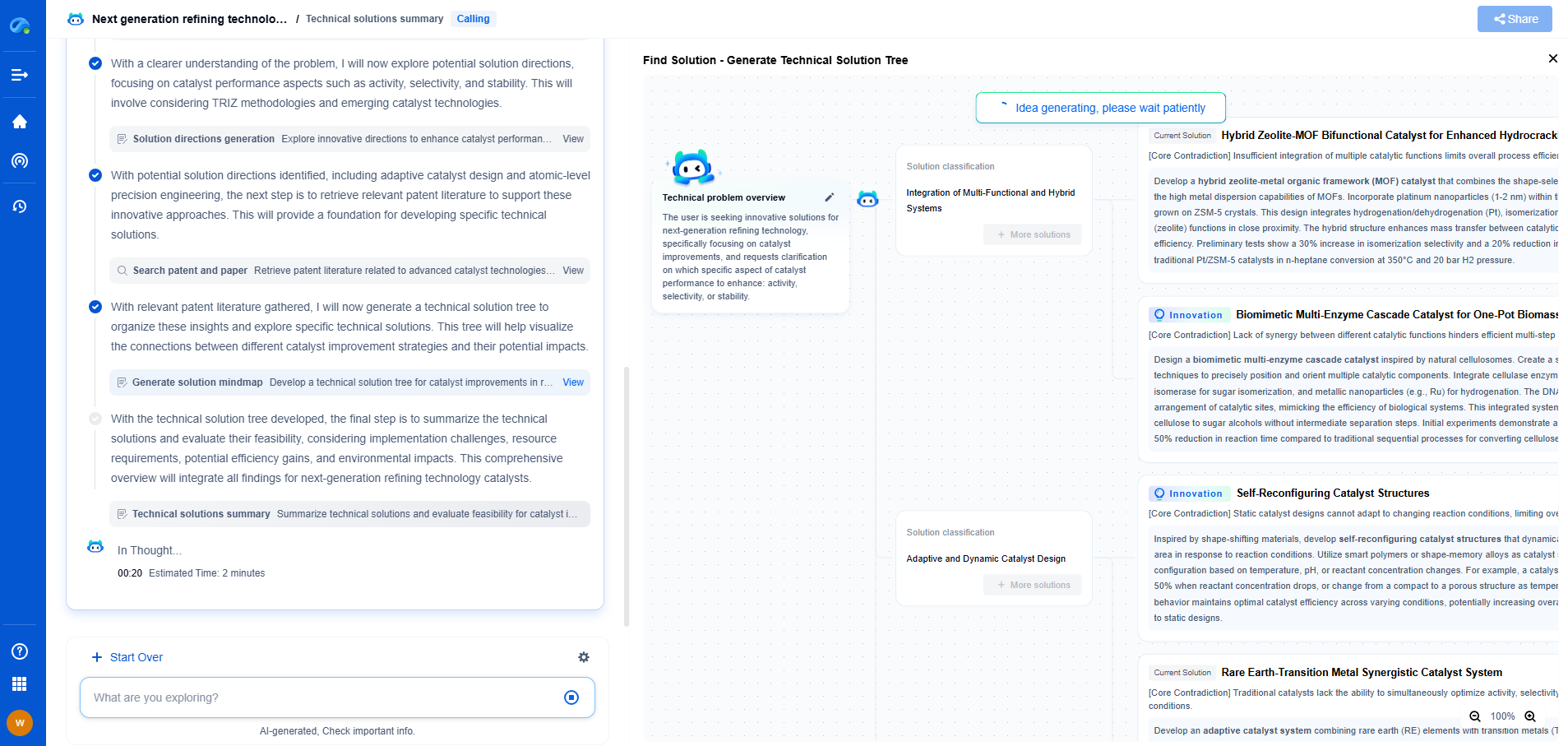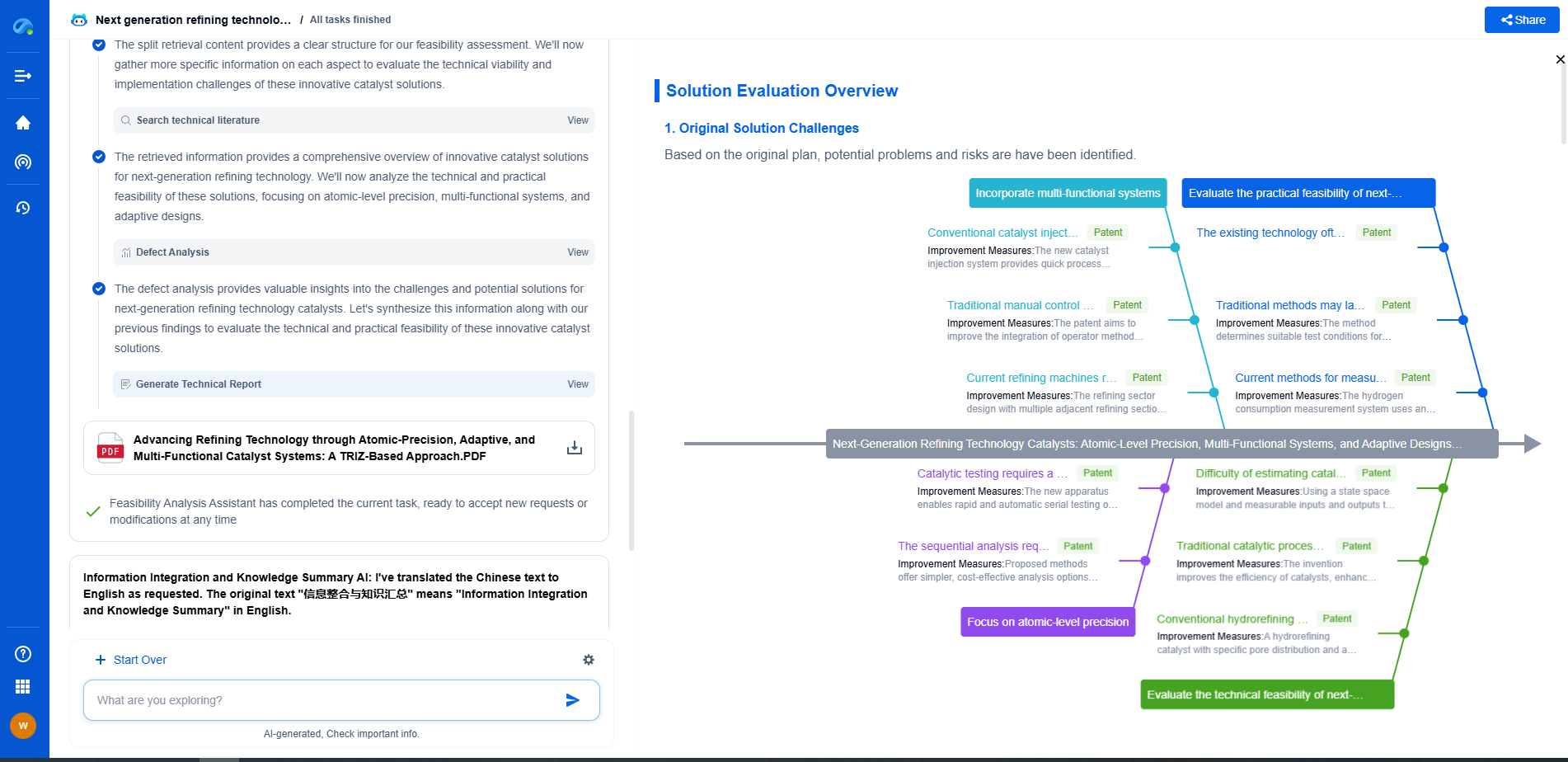Autonomous HVAC Systems: The Future of Smart Building Energy Efficiency
JUL 2, 2025 |
As we move further into the digital age, the concept of smart buildings is no longer a futuristic vision but a present-day reality. One of the most significant advancements in this area is the development of autonomous HVAC (Heating, Ventilation, and Air Conditioning) systems. These sophisticated systems are revolutionizing how buildings manage energy use, providing enhanced comfort, reducing costs, and contributing significantly to environmental sustainability.
The Evolution of HVAC Technology
Traditional HVAC systems have long been the backbone of building comfort, regulating indoor climate to ensure a pleasant environment. However, these systems often operate on fixed schedules and settings, leading to inefficiencies and energy waste. With the rise of the Internet of Things (IoT) and artificial intelligence, a new wave of HVAC technology has emerged. Autonomous HVAC systems leverage data from various sensors, learning algorithms, and cloud computing to optimize performance in real-time.
Key Features of Autonomous HVAC Systems
1. Intelligent Monitoring and Control
Autonomous HVAC systems are equipped with an array of sensors that continuously monitor various parameters, including temperature, humidity, occupancy, and air quality. This data is analyzed using advanced algorithms to make real-time adjustments to the system's operations, ensuring optimal performance at all times.
2. Predictive Maintenance
One of the standout features of autonomous HVAC systems is their ability to perform predictive maintenance. By analyzing historical data and identifying patterns, these systems can predict when a component is likely to fail or require servicing. This proactive approach minimizes downtime, extends the lifespan of the equipment, and reduces repair costs.
3. Energy Efficiency
Energy efficiency is at the heart of autonomous HVAC systems. By analyzing occupancy patterns and environmental conditions, these systems adjust their operations to reduce energy consumption while maintaining comfort levels. This results in significant energy savings and a reduction in carbon footprint, aligning with global efforts to combat climate change.
4. Integration with Building Management Systems
Autonomous HVAC systems seamlessly integrate with existing building management systems (BMS), providing a comprehensive solution for building managers. This integration enables unified control over various building functions, such as lighting, security, and HVAC, enhancing overall operational efficiency.
The Benefits of Implementing Autonomous HVAC Systems
Cost Savings
The primary benefit of autonomous HVAC systems is their ability to reduce energy costs. By optimizing energy use based on real-time data, building owners can see substantial reductions in their utility bills. Additionally, predictive maintenance helps avoid costly emergency repairs and extends the lifespan of HVAC equipment, further contributing to cost savings.
Enhanced Comfort and Productivity
Autonomous HVAC systems ensure a consistently comfortable indoor environment, which has been shown to enhance occupant satisfaction and productivity. By maintaining optimal temperature and air quality, these systems create a healthier and more pleasant environment for building occupants.
Environmental Impact
In today's world, where sustainability is a key concern, autonomous HVAC systems offer a viable solution for reducing a building's environmental impact. By lowering energy consumption and optimizing resource usage, these systems contribute to a greener future.
Challenges and Considerations
Despite their numerous benefits, the implementation of autonomous HVAC systems is not without challenges. Initial costs can be high, and there may be resistance to change from building operators accustomed to traditional systems. Additionally, the complexity of integrating these systems with existing infrastructure requires technical expertise and careful planning.
Conclusion
Autonomous HVAC systems represent a significant step forward in the evolution of smart buildings, offering a powerful combination of comfort, efficiency, and sustainability. As technology continues to advance, we can expect these systems to become even more sophisticated, playing an increasingly vital role in shaping the future of energy-efficient buildings. By embracing these innovations, building owners and operators can enjoy the benefits of reduced costs, enhanced occupant comfort, and a positive environmental impact, paving the way for a smarter, more sustainable future.
Ready to Reinvent How You Work on Control Systems?
Designing, analyzing, and optimizing control systems involves complex decision-making, from selecting the right sensor configurations to ensuring robust fault tolerance and interoperability. If you’re spending countless hours digging through documentation, standards, patents, or simulation results — it's time for a smarter way to work.
Patsnap Eureka is your intelligent AI Agent, purpose-built for R&D and IP professionals in high-tech industries. Whether you're developing next-gen motion controllers, debugging signal integrity issues, or navigating complex regulatory and patent landscapes in industrial automation, Eureka helps you cut through technical noise and surface the insights that matter—faster.
👉 Experience Patsnap Eureka today — Power up your Control Systems innovation with AI intelligence built for engineers and IP minds.
- R&D
- Intellectual Property
- Life Sciences
- Materials
- Tech Scout
- Unparalleled Data Quality
- Higher Quality Content
- 60% Fewer Hallucinations
Browse by: Latest US Patents, China's latest patents, Technical Efficacy Thesaurus, Application Domain, Technology Topic, Popular Technical Reports.
© 2025 PatSnap. All rights reserved.Legal|Privacy policy|Modern Slavery Act Transparency Statement|Sitemap|About US| Contact US: help@patsnap.com

